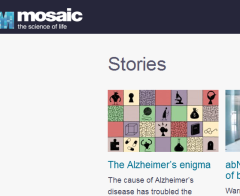Utopian thinking

A map of Utopia
While talking about the political presumptions inherent in the academic field of bioethics, Professor Richard Ashcroft asked if it was possible to imagine a non-liberal approach to the subject. In light of the title of his talk at King’s College London last week, “Bioethics as a style of utopian thought”, I was more tempted to ask if it was possible to imagine a non-utopian approach to bioethics.
I didn’t quite dare ask, however, as I was again interloping at an academic seminar, bringing only a very specific and naive perspective with me. The title had intrigued me, sparking off my continuing interest in concepts of Utopia, and I was hunkered down at the side of the room, at a table across which bars of light were falling from the window in a peculiarly attractive manner. Bioethics is not a field I am so familiar with but by the end of Ashcroft’s talk, I was wondering how anyone could doubt that it is a utopian endeavour: the demarcation of what is good or bad in biological research and medicine or, failing that, the identification of good or bad ways to identify what’s good and bad in biomedicine. I’ve probably misunderstood the entire field, whose practitioners apparently consider it to be resolutely non-utopian, but how can you consider good/bad or right/wrong dichotomies (or even spectrums) without having a view as to what would be ‘best’, and what is the world where everything is at its best but Utopia?
Now I should admit that my only real model for thinking about Utopia is the original story by Thomas More. I feel as though his work should have some elevated status if only because its title was yet another word that he coined for the English language. But perhaps the original has been superseded and redefined by all of its successors. There is a conference on Utopian studies in Canada in October (which I learned about from a tweet from Ashcroft later in the week): perhaps that would be a good place to find out how Utopia stands amid its later imitators and rivals? Now if there was only some way I could persuade work to send me….
Anyway, I don’t think More’s Utopia is the ideal of perfection that the current understanding of ‘utopia’ would suggest. Obviously it is hard (for me) to translate and comprehend the contextual culture of 1516, but even so, More’s Utopia has some downright illiberal features including, but not limited to, the use of slavery as a penalty for ‘un-Utopian’ behaviour. It is, perhaps, a mistake to read it as a vision of a perfect society. Of course, it is no dystopia either. To use today’s parlance, maybe the original Utopia is a heterotopia, a place of good and bad, written to pass comment on contemporary English society rather than to offer a vision of something ‘better’, or even ‘best’. I suspect that More’s temperament was not so far from Ashcroft’s, with a deprecating sense of humour born of a tendency to grouchiness that may seem cynical but probably hides a great big heap of idealism. Or maybe I am projecting on to both men what I would like the truth of my own temperament to be. Are utopias visions of (imperfect) happiness from generally unhappy people?
Relating this tentatively back to bioethics for a moment, I liked a quote that Ashcroft used in his talk: “If you don’t like the Utopia you’re being sold, build another one.” It reminded me of a talk last year, in which Ernst Bloch was cited as saying something along the lines of, “Life has been put into our hands…. If there is something missing, make it – now!” Bioethics may be riddled with solutionism (seeing medical technology as a body of (potential) solutions to social and political problems), but if you don’t like that, you could build your own version instead. But be in no doubt that in considering the best way for human societies to incorporate medical advances, you are at some level envisaging an ideal, utopian society, with the ever-present caveat that utopias can only really ever be signposts, not destinations.
In the Q&A afterwards, someone referred to a description of bioethics as a jardin des plantes, or zoological garden, which Ashcroft interpreted as, among other things, a place to breed familiarity with the strange. I liked that idea very much.
